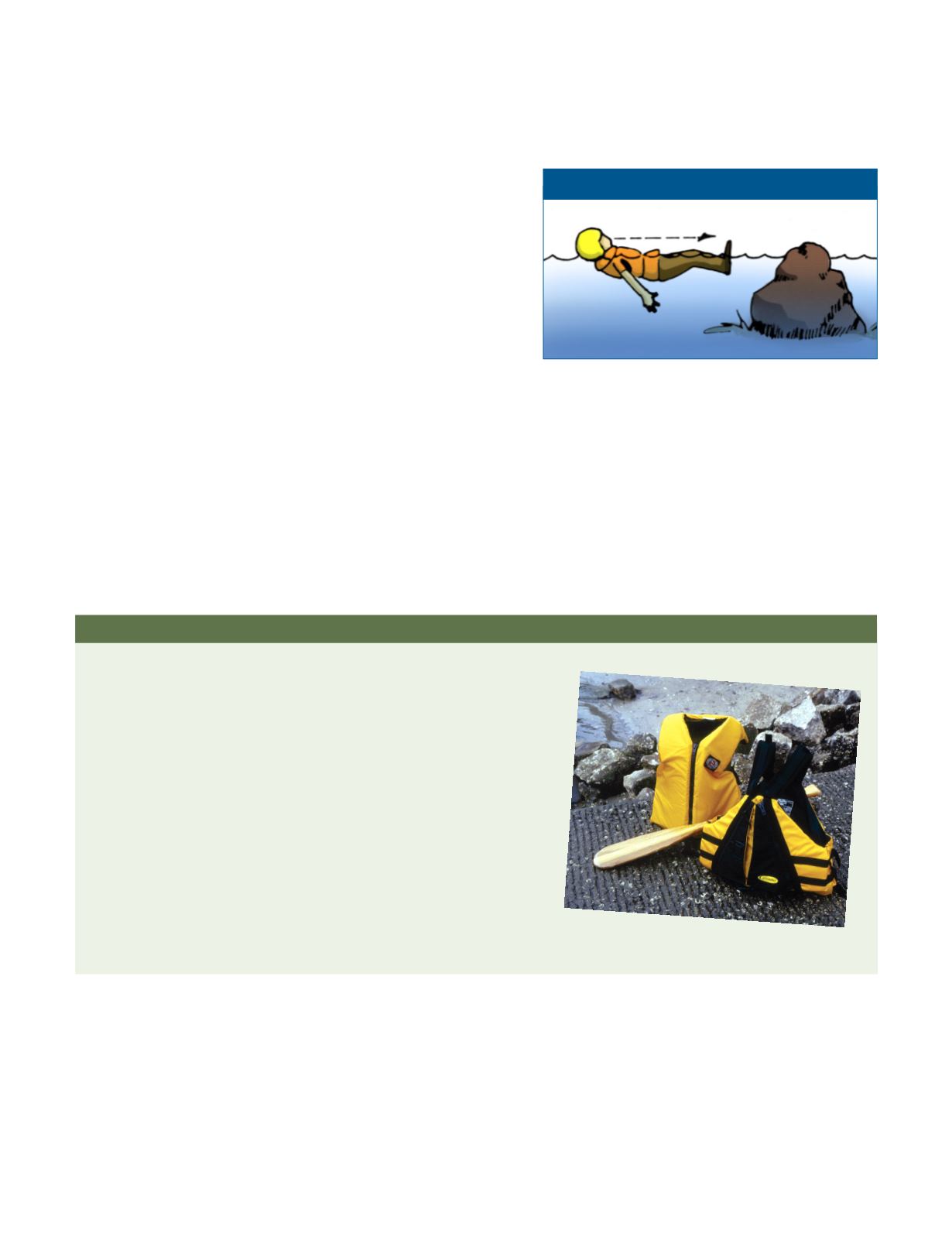

California Boating
A Course for Safe Boating
85
Chapter 3
u
Vessel Operation
Check
that all passengers know what to do if the boat capsizes
or “flips.” This means knowing swimmer’s position, keeping to
the upstream side of the boat, keeping track of people and gear,
righting the boat and re-entering the boat.
Check
to see that you have recommended equipment such as a
repair kit, bailing device, river maps, a flashlight, a compass, a
knife, and a pump.
While Under Way
Check
any section of the river you’re unfamiliar with, or that
you can’t see from the boat. Go to the shore and scout rapids you are not
familiar with. If the rapid is too much of a challenge, carry the boat (por-
tage) around the obstacles.
Check
the terrain along the river and river banks. Beware of and avoid
strainers such as overhanging trees, log jams, brush piles, and other
obstacles in moving currents.
Check
to make sure you are aware of the effect of cold water, air temperature
and wind on your body temperature. Hypothermia is a constant hazard on
the river.
CHECK OUT YOUR EQUIPMENT
Each crew member should wear:
A Coast Guard-approved life jacket in serviceable condition and of a type
and size appropriate for the conditions and the activity.
A properly fitted helmet.
Booties, sandals with a heel strap or shoes that will not come off easily.
Nylon, synthetic or wool clothing because they do not hold water.
A wet or dry suit for cold weather or water conditions.
Sunglasses with a leash, sunscreen and a signaling whistle. Do not apply
sunscreen to your forehead where it can drip into your eyes, or to the back
of your legs because it can cause you to slip out of the raft.
SWIMMER’S POSITION
















